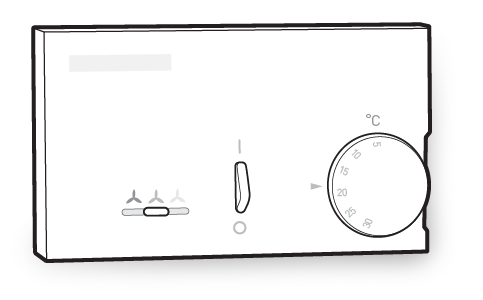Housekeeping staff are responsible for room condition on a day-to-day basis, and constitute a key control point for energy management and maintenance. Continuous staff training and clear reporting procedures are essential. The following key check points are relevant:

Train your housekeeping staff to turn down the heating and cooling when cleaning the room and close shutters or curtains to avoid unwanted solar gain during the day. Also, train your staff to check that there are no leaking in the rooms and report leaking water fittings.
Energy management, maintenance and reporting during housekeeping activities can make important contributions towards energy and water minimisation.
Environmental benefits
Reducing thermostat settings by just 1 ºC in winter can reduce heating energy consumption by 10 %, and similar savings in cooling energy consumption can be achieved in summer by correct thermostat adjustment. Closing shutters or curtains to avoid unwanted solar gain during the day can reduce or avoid cooling energy consumption.
Reporting leaking water fittings so that they are fixed promptly can reduce room water consumption by hundreds of litres per day
Reduced costs
Simple measures to reduce energy use during housekeeping can save significant amounts of money, especially in relation to temperature regulation. In the absence of a building management system, reducing thermostat temperature by just 1 ºC can reduce heating energy consumption by up to 10 %, whilst closing shutters and curtains in summer can significantly reduce the demand on air conditioning systems.
Efficient cleaning techniques reduce chemical and water costs. For example, one less toilet flush every time a room is cleaned in a 100-room hotel could save EUR 330 per year, at a water price of EUR 2.00 per litre.
Through substitution of cleaning chemicals in laundry and housekeeping operations, a small 14-room hotel in the UK was able to save EUR 1 700 per year (Envirowise, 2008).
Despite significantly higher upfront costs for microfiber compared with conventional mops (EUR 2.72 compared with EUR 0.33 per 100 rooms cleaned), and higher washing costs (EUR 23.52 compared with EUR 3.92 per 100 rooms cleaned), the lifecycle cost of cleaning using microfiber mops is 5 % lower than conventional mops owing to 95 % chemical and water savings and 10 % labour savings (Espinozal et al., 2010).

Video
The use of this video on this site has been granted by The Travel Foundation.